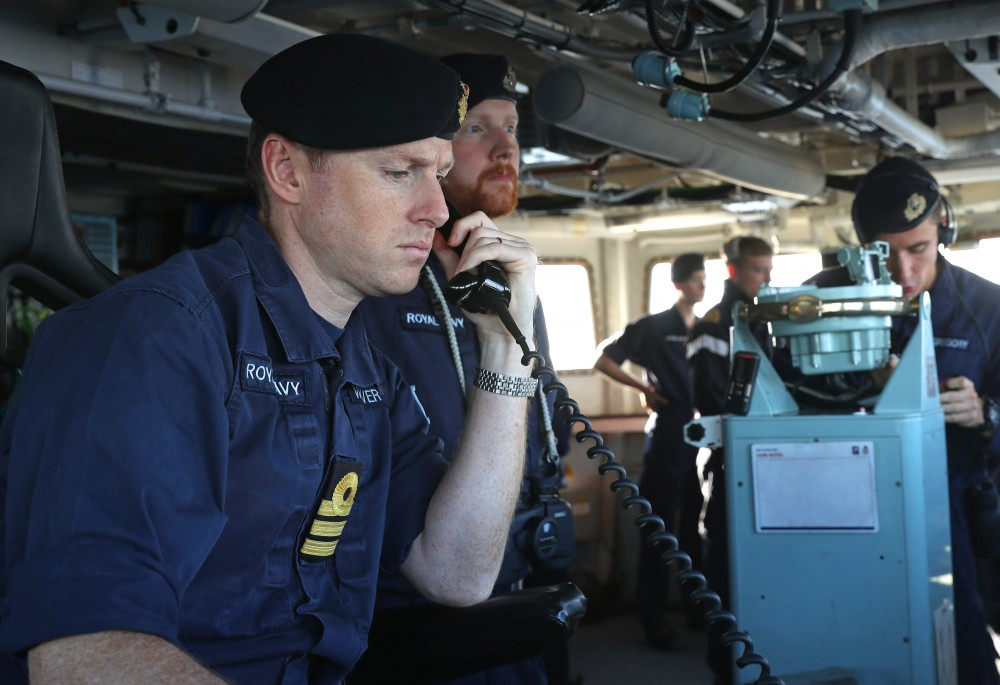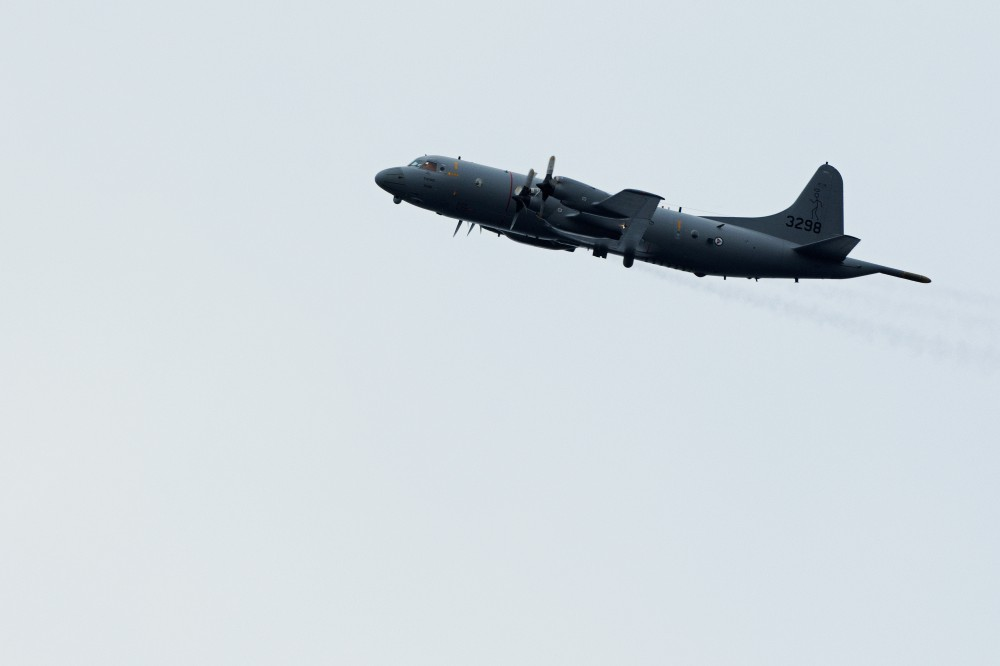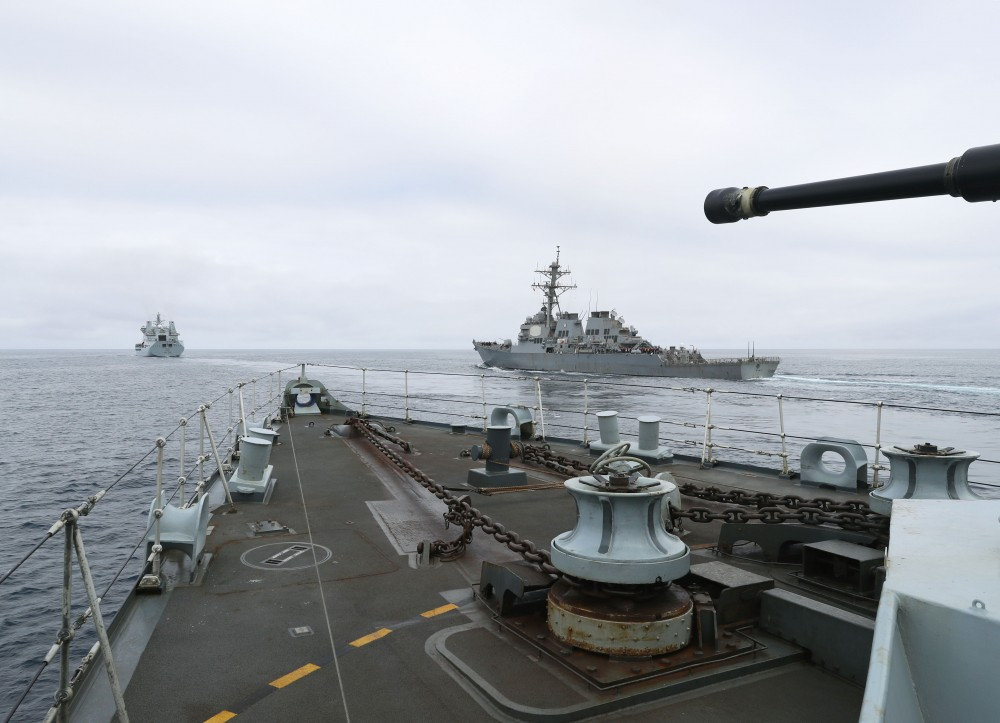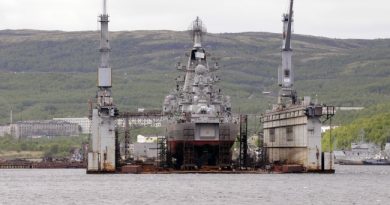London calling to the faraway north, leads largest NATO task force into the Barents Sea since last Cold War

A British Royal Navy statement following this week’s exercise disproves the post-Cold War saying “High North – Low Tension.”
“The High North is witnessing a change in its security environment and represents a key area of interest for the UK. Recent Russian attempts to control freedom of access and navigation in the region are of concern to the UK and its partners,” the September 10 statement reads.
Per Erik Solli, an advisor with the Nord University in Bodø, says the exercise has been far larger in scope compared to a similar event in May when British and American surface warships sailed into the Barents Sea for the first time since the 90-ties.
He lists the British RC-135 strategic reconnaissance aircraft, Voyager tanker aircraft, and Typhoon fighters.
According to The Telegraph, the Typhoon fighters have never before operated so far north in the Arctic.
The RAF fighter jets conducted an air defence exercise to improve integration between air and maritime assets.
Also, Norwegian and Danish military planes were flying the Barents Sea and interacted with the group of warships. Denmark’s contribution was a Challenger maritime surveillance aircraft, while Norway flew the P-3C Orion maritime patrol aircraft and the smaller DA-20 Falcon electronic surveillance aircraft. According to Russian media, referring to the National Defence Control Center, the Norwegian aircraft were met by MiG-29 fighter jets from the Northern Fleet several times this week over international airspace in the Barents Sea.
Also, the British RC-135 was met by a Russian MiG-29 in international air space over the Barents Sea.
An American P-8A Poseidon was part of the mission, according to a statement by the U.S. 6th Fleet.

Izvestia reports the NATO navy group to be operating about 200 kilometers from the Kola Peninsula. Lt. Col. Ivar Moen, spokesperson with the Norwegian Joint Headquarters, said earlier this week the area of sailing would be off the coast of Finnmark and the Fisherman Peninsula.
The Fisherman Peninsula is the westernmost appendix of the Kola Peninsula.
In May, the U.S. Navy informed Russia ahead of the Barents Sea mission. Ivar Moen says to The Barents Observer no such information was shared with the Northern Fleet this time. “The Joint Headquarters did not inform the Northern Fleet ahead of the voyage,” he writes in an email.
In May, the U.S. and U.K. warships operated in the western sector of the Barents Sea, while the four-nation mission this week sailed further east, closer to Russia’s strategic important navy bases.
The four surface warships in the NATO group were the Norwegian frigate KNM Thor Heyerdahl, the U.S. Navy Arleigh Burke-class destroyer USS Ross, the British Royal Navy frigate HMS Sutherland and the auxiliary RFA Tidespring.
The Barents Sea is the Russian Northern Fleet’s main exercise area and route to the North-Atlantic in case of escalating global military tensions. By securing the so-called Bastion defense in the waters between northern Norway and Iceland, Russia can threaten with areal denial for NATO forces into the northernmost parts of the North-Atlantic and by that making the ballistic missiles submarines of the Northern Fleet a reliable nuclear deterrance.
During the NATO mission this week, HMS Sutherland led the ships through a demanding series of exercises, testing their abilities to conduct surface and anti-submarine warfare in what the Royal Navy describes as “one of the world’s most challenging environments.”

No official information is provided about possible NATO submarines operating in the area. After the May voyage, Russian state-affiliated news agency TASS reported a US Navy Virginia-class nuclear-powered submarine and a Norwegian Ula-class diesel-electric sub had participated.
British Defense Secretary, Ben Wallace, says the consequences of climate crisis are changing the north.
He added: “The UK is the closest neighbour to the Arctic states. In addition to preserving UK interests we have a responsibility to support our Arctic allies such as Norway to preserve the security and stability of the region.”

Russian Northern Fleet says its assets are monitoring the NATO warships.
Moscow has voiced concerns that the current increase in NATO sailings in the adjacent waters to Norway is part of the American anti-ballistic missile defense training.
The USS Ross has the capability to function as part of the Aegis Ballistic Missile Defense System.
Newspaper Izvestia reported on September 10 that although Norway last autumn officially said no to take part in the American anti-ballistic missile defense program, it provides ports for NATO ships that are part of the missile defense system.
“In August the destroyer USS Roosevelt (DDG-80) and the multipurpose nuclear submarine USS Seawolf visited there”, the newspaper writes pointing to the vessels’ port calls to Tromsø in northern Norway.
In an unusual move, the Russian navy this August and September sailed two corvettes from the Baltic Sea, via the inland waterways, to the White Sea and the Barents Sea.
The Buyan-class corvette Zeleny Dol launched a Calibr cruise missile from the White Sea at a coastal target located at the Chizha shooting range at Cape Kanin, according to the press-service of the Western military district.
By quickly sailing smaller warships with the new long-range Calibr navy missile via the inner waterways, Russia proves it can counter threats in one direction or another, that be the Baltic Sea one day or the Arctic the other.
Izvestia reports the Calibr and Zircon cruise missiles are capable of counter NATO’s anti-ballistic missile vessels in the Barents Sea.
Related stories from around the North
Arctic: Are potential Arctic security threats eclipsing urgent action on climate? A new study makes its case, Eye on the Arctic
Canada: COVID-19 blamed as work on Canadian Arctic military port first promised in 2007 sees new delay, Radio Canada International
China: China, Russia singled out in new U.S. Arctic defense strategy, Eye on the Arctic
Denmark: Pompeo to talk Arctic at upcoming meeting with Danish Foreign Minister, Eye on the Arctic
Iceland: Nordics should aim for common approach to China’s Arctic involvement says report, Eye on the Arctic
Norway: Good Fences? Good Neighbours? The Diplomatic Travails of Norway and Russia, Marc Lanteigne
Russia: Russian navy conducts major manoeuvres near Alaska, The Associated Press
Sweden: Sweden’s FM calls for more EU involvement in Arctic as country hosts EU Arctic Forum, Radio Sweden
United States: U.S. appoints special coordinator for the Arctic to advise on national security, economic issues, Alaska Public Media



